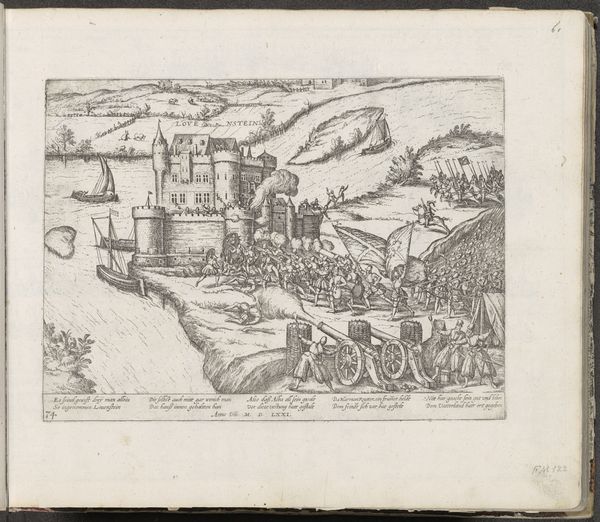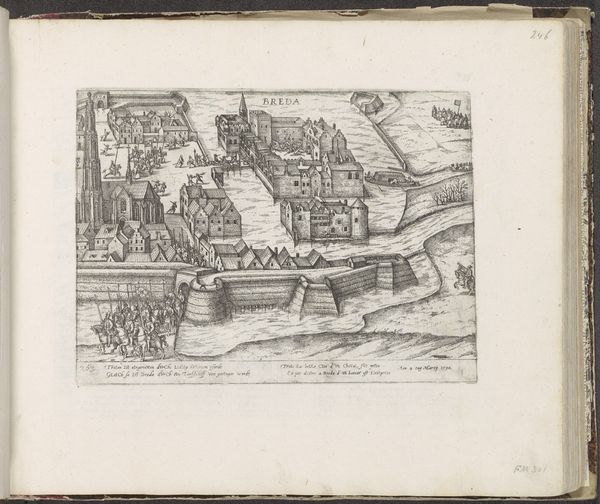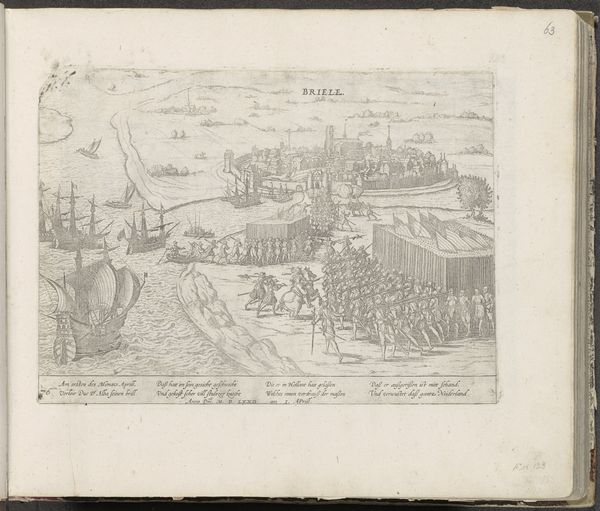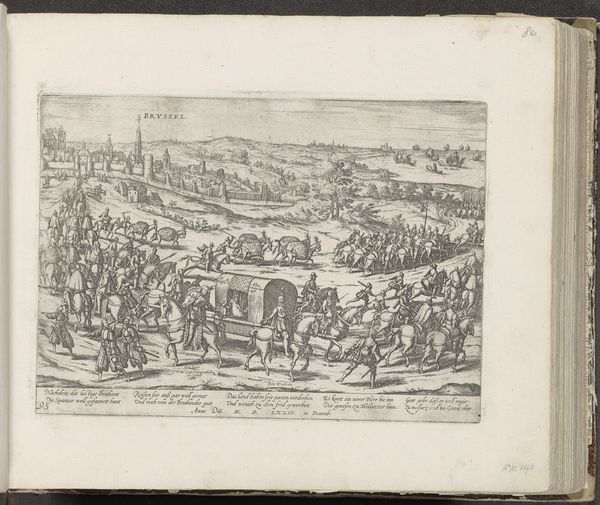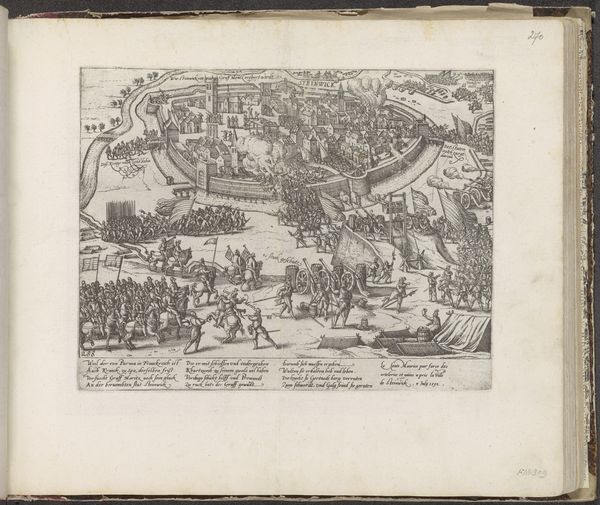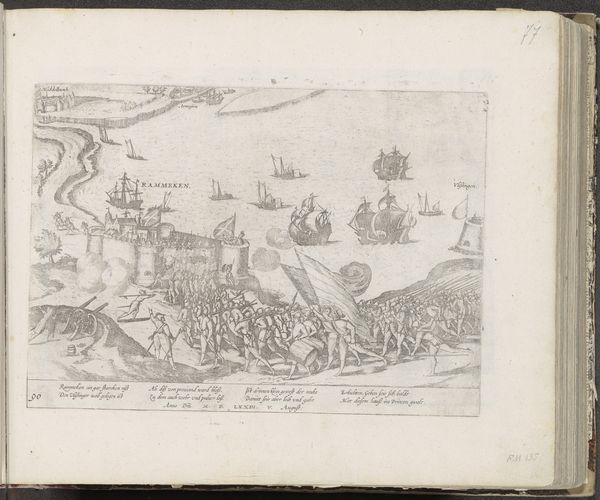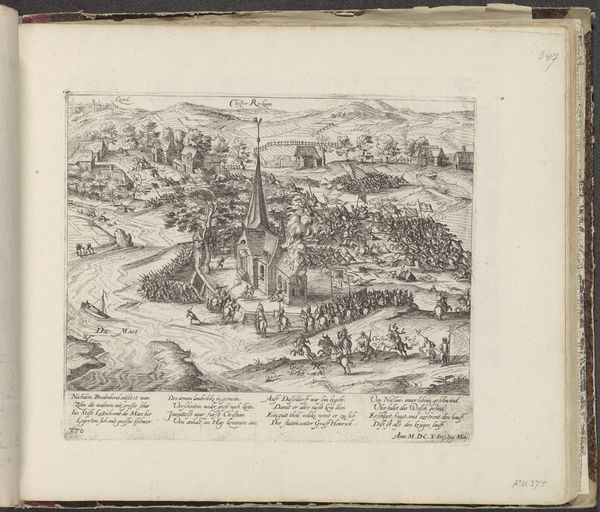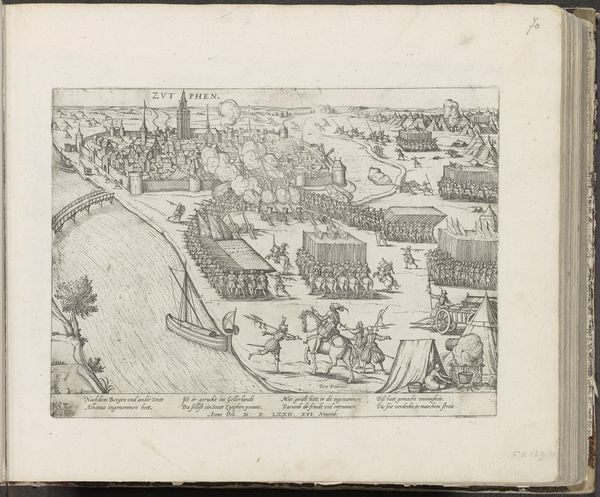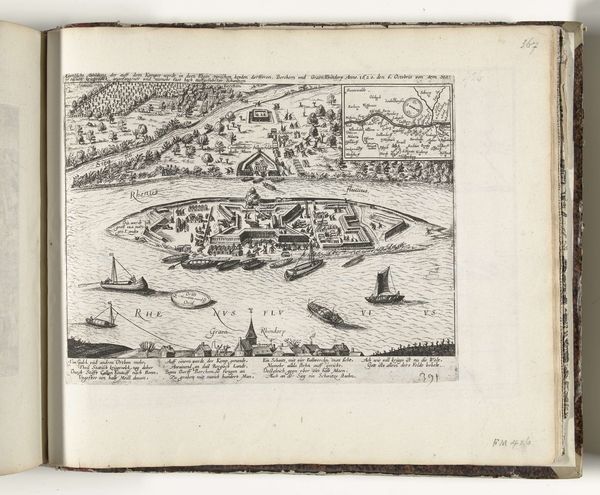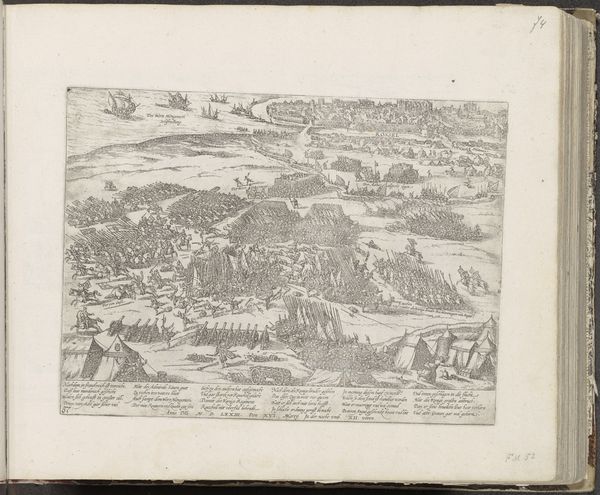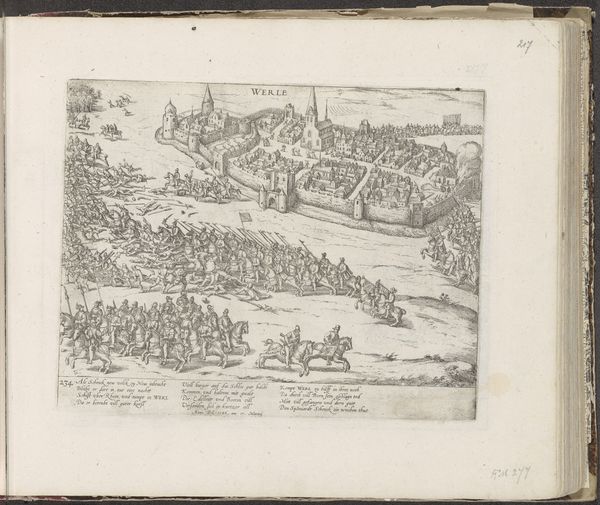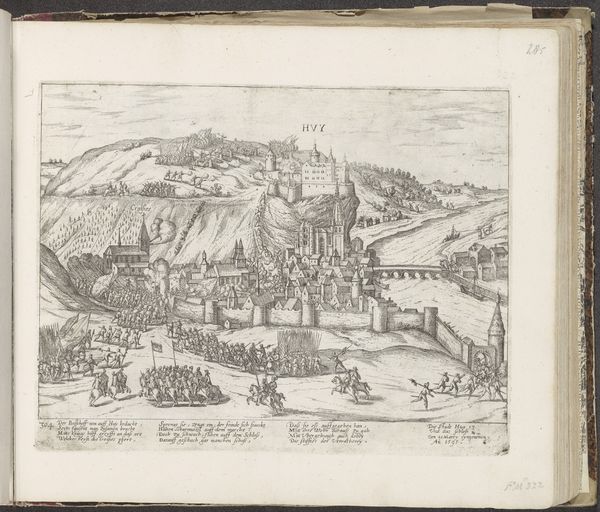
drawing, print, ink, engraving
#
drawing
#
toned paper
#
medieval
#
pen drawing
# print
#
pen sketch
#
sketch book
#
landscape
#
personal sketchbook
#
ink
#
ink drawing experimentation
#
pen-ink sketch
#
pen work
#
sketchbook drawing
#
cityscape
#
history-painting
#
sketchbook art
#
engraving
Dimensions: height 205 mm, width 284 mm
Copyright: Rijks Museum: Open Domain
Curator: Frans Hogenberg's print, “Urdingen wordt verrast, 1584,” from circa 1587-1591, presents a fascinating glimpse into a historical event rendered in ink on toned paper. I’m immediately struck by the panoramic view; it almost feels like a strategic board game laid out. Editor: Yes, there's a definite sense of spatial control. The meticulous details, crafted with ink and engraving, emphasize the fortifications of the city and the positioning of figures and ships. What does "verrast" imply in this context? Is it surprise as in ambush, or something more calculated? Curator: Indeed. The Dutch title suggests "Urdingen being surprised," so yes, likely a strategic taking of the city. Considering Hogenberg’s context—chronicling historical events amidst the Dutch Revolt—the work functions as visual propaganda and as documentation of this pivotal siege and highlights political and religious conflicts of the era, including their impact on gender roles and societal norms. The bodies and figures, however, don't denote the suffering of these civilians during the Dutch Revolt. The rendering style makes these individuals appear uniform. Editor: That makes sense. The medium here becomes quite crucial—printmaking allowed for the mass dissemination of these depictions, solidifying a particular narrative about Dutch strength and resilience in material form. One could also analyze this based on the consumption and circulation of these prints and how the image could be construed to legitimize certain actions within conflicts. I wonder about the social stratification within the frame? Does this account challenge established authority through visual form? Curator: Precisely! It’s about visualizing a national identity forged in conflict. Given his socio-political agenda, I wonder if the precision also extends into a meticulous capturing of local specificities with attention to topography as the artist is engaging with landscape conventions for propagandistic effect and, subsequently, legitimizing an artistic practice situated firmly within an artisanal domain. But tell me more about what elements speak to labor in your mind. Editor: Well, the use of printmaking itself situates labor in the realm of reproduction and distribution, underscoring the work's engagement with a wider social fabric of communication and making. But that horizon line and open sky further underscore notions of freedom, hope, and a shifting cultural perspective through new modes of distribution. Curator: Looking at the faces, dress, the different tools they utilize gives me so many leads to explore this battle and time period further and reflect on those impacted by its making. Editor: Definitely. These prints allow us to dissect historical narratives through material evidence. It's not just about seeing the event, but understanding how its depiction actively participated in shaping collective consciousness and perhaps, material realities.
Comments
No comments
Be the first to comment and join the conversation on the ultimate creative platform.
